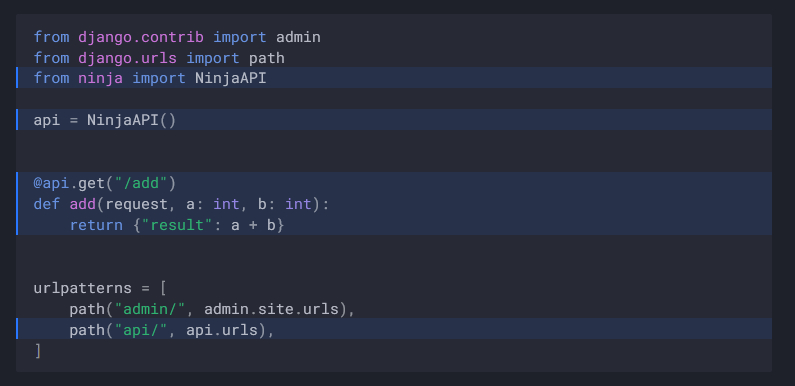Affected files: docs/Guides/Django REST Framework/7 - Writing API Endpoints.md
6.3 KiB
Overview
An endpoint corresponds to a specific URL in your service. For example, the localhost:8000/api/v1/books/1 would return the book with the ID=1.
In Django REST Framework, there are some key points you must take note of when writing your own API endpoints
- Database/SQL Table
- Model
- Serializer
- View
- URL
An API endpoint is built from the ground up, starting with the SQL Table. This section assumes you're familiar with SQL (you should be before proceeding with the other chapters!) and the Django Model previously discussed.
The diagram above is a very rough oversimplification of how Django REST Framework works out of the box
Model
As mentioned in the previous chapter, the Django model (models.py) defines the object you're intending to keep records of. Whether it be books, students, or menu items, the Django model you create serves as a reference which is then used to populate or create the table in your SQL database.
When called from a serializer, a Django model returns a Python object.
Serializer
A Django REST Framework serializer takes in a Django model and serializes it into JSON.
In other Python backend frameworks such as Django Ninja or Flask, you often skip the serializer process altogether and return values directly.
Sample Code Snippet from Django Ninja
This is not the case with Django REST Framework.
Serializers define the model used using the class Meta. Using a DRF serializer, you can choose to specify which fields to return

The serializer above only returns 4 fields (id, username, email, full_name). Any other fields are omitted such as age, birthday, and so on.
Serializer - Validation
In addition to manipulating your model before JSON serialization, DRF serializers allow you to validate fields to ensure proper values are provided.
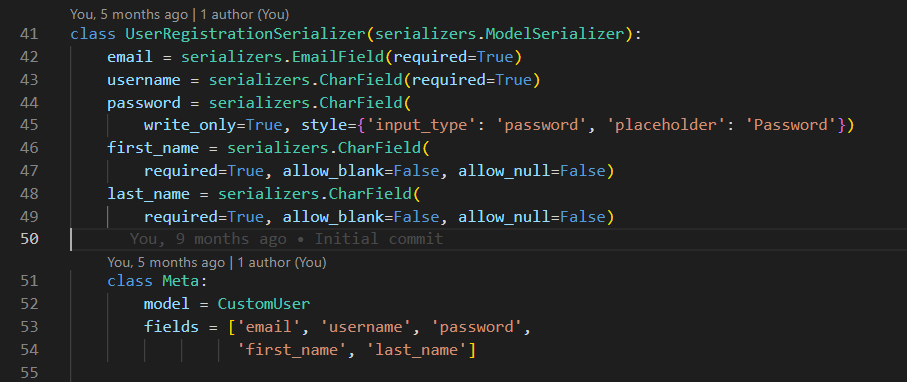
In the code snippet above, any fields specified as required=True will error out if no value is provided. You don't need to run it through your own checks.
Serializer - Custom Hooks
Django REST Framework serializers contain different methods you can use to hook in custom functionalities.
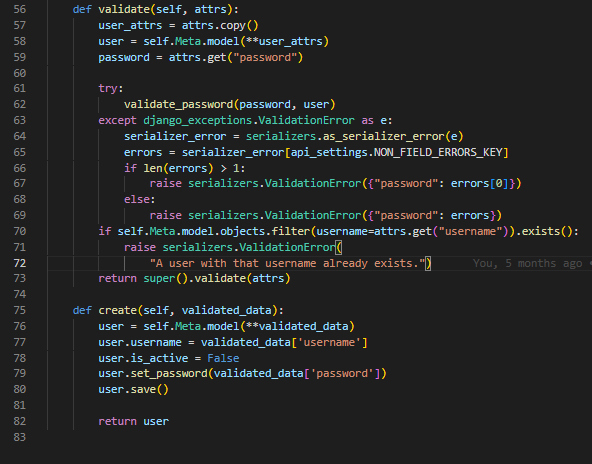
In the code snippet above used for user registration, we can hook custom functions into the validate and create methods which would then be triggered when sending an HTTP POST request that uses our serializer.
The validate method is used to verify that a valid password is provided alongside other integrity checks.
The create method is also used to ensure that the password and username is set properly**.** In the example above, the user's is_active property is set to False in the create method to make sure users have to activate their accounts via email.
This is just one of the few use cases for serializer methods, there's an update method too alongside others which you can check in the official documentation.
Note!
It's important to note that these DRF serializer methods are different from those in Django models. If you choose to use the Django admin panel instead to create your records, the hooks above will not work. The hooks we discuss here only apply to endpoints that use your Django REST Framework serializer.
Django itself provides its own validation through in your models (models.py) with methods such as clean, pre_save, and post_save with docs found here.
While this may be confusing at first having two approaches to validation, it is important to note that Django and Django REST Framework are separate projects, with one being built on top of the other.
A good use-case for serializer-level validation would be the following;
- An API endpoint for managing (Create, Retrieve, Update, Delete) books for users where you'd need restrictions to stop readers from deleting books they don't own
- An API endpoint for administrators to manage books without restrictions
Each endpoint has their own set of restrictions and requirements so DRF serializer validation would work well here.
Django model validation on the other hand would work better with model field validation,
- Ensure a User's age matches their birthday and if not, throw an error
- Update an Employee's Payroll record to increase their salary if they are promoted to a higher position
The requirements above are irrelevant of the API endpoint used and so model-level validation works best.
Knowing where you should place your validation functions is something you will encounter later on. There's an excellent discussion on GitHub which includes view-level validation if you're interested.
If you're just starting off, this isn't something you should be too worried about. Just knowing that the serializer parses to JSON is plenty enough to get started with building CRUD apps.
Views
If serializers convert the underlying model to JSON, then views return the web response.
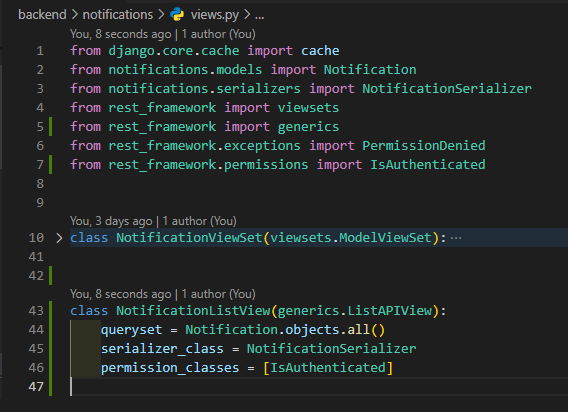 Views take in HTTP requests passed in from the actual URL. You can specify a
Views take in HTTP requests passed in from the actual URL. You can specify a queryset to define what objects to return and specify a serializer which will be used to structure the returned data.
Much like with DRF serializers, you customize what they return to the user. This can be to check whether the user owns what he/she's modifying, or
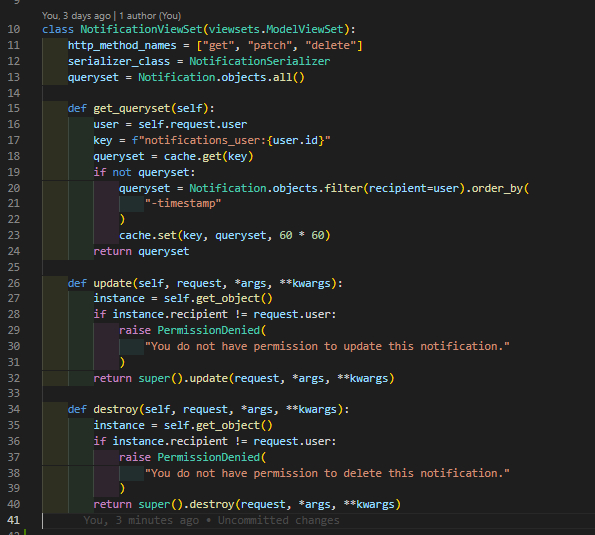 If you're using Memcached or Redis, you'll most likely have it integrated here, similar to the example above. This is something you won't have to worry
If you're using Memcached or Redis, you'll most likely have it integrated here, similar to the example above. This is something you won't have to worry


